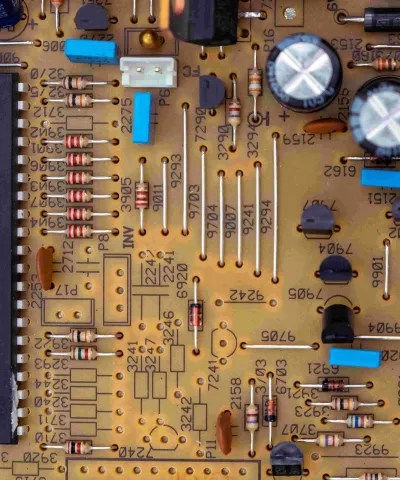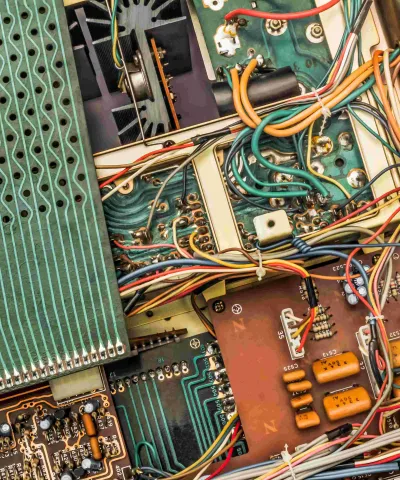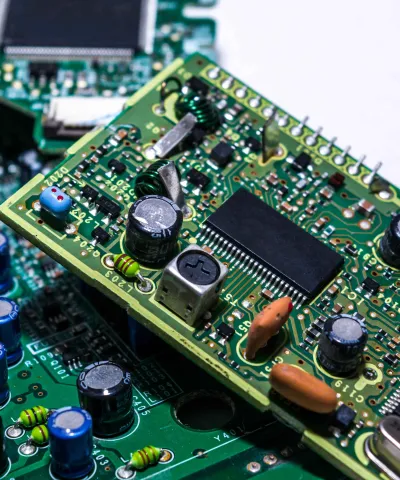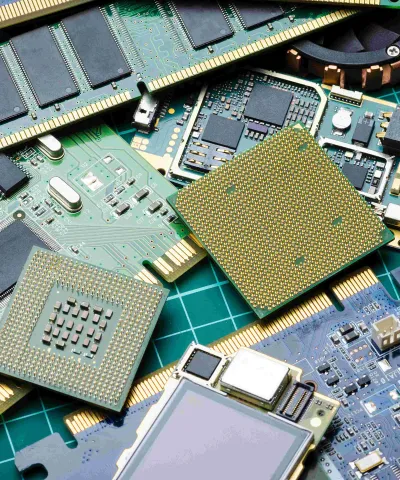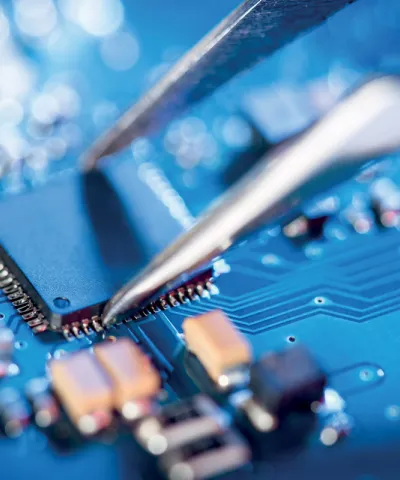The official motto of SEMICON West 2025 in Phoenix was “Stronger Together”. The unofficial was “$1T in global revenue by 2030”. In every speech, every panel, every conversation, those two mottos wound up an unspoken tension: the rising tide of semiconductor is lifting some boats more than others.
The core question is not whether the industry will grow to $1T. Some speculate that with the current pace of AI demand the milestone may be reached by 2027. More pressing is who will capture that windfall of surplus value. Will it continue to accrue to a handful of dominant incumbents, or can materials suppliers, packaging innovators, fabricators, and thousands of other ecosystem players across the value chain carve out meaningful share?
Below, we break down five defining themes that resonated at SEMICON West 2025 and detail how players at every stage of the value chain can leverage commercial excellence to maximize their share of the $1 Trillion.
Theme 1. Policy makers around the world must focus on the holistic commercialization of the AI stack
The good news for US technologists is that America continues to lead the world in critical components of the AI hardware and software stack. From GPU dominance to AI-driven design tools and capital equipment innovation, the foundation for AI excellence stateside is robust. Yet, the American commercial story remains fragmented. While funding brand-name projects is a first step, it is easy to overlook the impact of ecosystem enablers: e.g. specialty gases providers, wafer substrate makers, advanced interconnects designers, and even the talent pipeline. This is a lesson to be learned not just in America, but around the world.
The call for change was loud and clear at SEMICON West. The presence of so many industry players in and around Phoenix, Arizona is a testament to the holistic investment vision on a state level that can and should be replicated on a national and multinational one. Companies across Korea, Japan, Europe, and beyond need to come together around a clear, simple commercial story, one that's strong enough to stand out in an intensely competitive market.
At the same time, the restructuring of supply chains through friendshoring, nearshoring, and redundancy carries unavoidable gross-margin implications. Local fabs, extra suppliers, and supply webs introduce supply chain resilience, a necessity in today’s globalized market, but also invoke costs few have modeled fully. The right commercialization strategy can turn those extra costs into value.
Every country can and must compete by becoming the world's one-stop-shop for the AI stack
- Rohit Mathew
Commercial opportunity: Governments, industry groups, and individual companies all play a role in helping customers navigate the increasingly complex AI ecosystem. The nations and industries that will be the most successful are those that make it easy to buy, and understand, the collective AI stack. Drawing on experience across the US, Europe, the Middle East, and Asia, we’ve seen how progress accelerates when organizations translate engineering-driven innovation into clear, outcome-focused offerings. Making that connection between technical excellence and commercial clarity through a simple story is where lasting value will be created across the semiconductor supply chain.
Theme 2. Precision = profit at both the atomic and grid level
As structures grow thinner and high-volume manufacturing (HVM) features enter the angstrom era, the semiconductor industry faces remarkable demand for molecular precision. Placing one atom correctly a trillion times per wafer is not hyperbole, it is a business requirement. At the other end of the scale, a misplaced atom may result in millions of dollars of waste, excessive heat, and strains on the electrical grid. Put simply, we can’t get away with the imprecision we used to.
Every single ecosystem player has a hand in driving precision, and each should benefit from delivering that value. Materials suppliers with traceability down to the unprocessed ore provide necessary predictability for R&D and HVM. Advanced packaging players with mid-stream defect detection create value through predictable yield. Metrology, in particular, is set to be a driving force for value uplift. The metrology equipment market is forecast to grow faster than overall WFE, propelled by in-process monitoring. The major metrologists are reframing themselves as yield-enablers. Commercially, this means suppliers must price for consistency and traceability across the chain, while customers judge on yield-at-scale.
Commercial opportunity: Precision is value. Value can be priced. Each basis point of yield improvement is worth real dollars, but who will capture that uplift? Across industries, we see a shift away from one-time transactions toward models that link compensation directly to measurable outcomes. For semiconductors, that evolution could mean pricing based on performance, reliability, or yield, aligning incentives across the value chain and rewarding those who deliver sustained precision.
Theme 3. Moore's Law will live on in advanced packaging
The death or life of Moore’s Law is a well-worn debate, but everyone can agree that its definition is transforming. While returns from transistor geometry are diminishing, performance and power advancements continue. Those at SEMICON agreed that advanced packaging will carry the torch of innovation.
To see just how much value is at stake in advanced packaging, one must only follow the investment. A global OSAT leader has broken ground on an advanced packaging facility in Arizona. A leading foundry’s fab capacity for advanced packaging is oversubscribed. Materials science innovations in interconnects show packaging advancement at all levels. Advanced packaging is breathing new life into substrate makers, and Printed Circuit Board (PCB) players. Soon, investors will expect returns.
The challenge is as much commercial as it is engineering: 3D packaging demands innovation in thermal abatement, so who picks up the bill? What parts of the value chain will see uplift from innovations in plasma bonding, or just simple improvements in reliability? Exciting new innovations mean novel opportunities to carve out returns on value delivered.
Commercial opportunity: Monetizing innovation is a commercial necessity. To design product to value, ecosystem players must start by identifying white space where the market is willing to pay: improved thermal abatement for 3D packaging, for example. Then, product designers must leverage market-driven insights to guide strategy every step of the development journey, so that new technologies enter the markets with both technical strength and commercial traction.
Theme 4. Data is the semiconductor industry's new currency in the age of AI
The semiconductor ecosystem has always run on data, but the scale and monetization models are shifting. The 100 TB of data generated by a single fab in one day now has AI implications that can create value well beyond the four walls. Digital twins, in-line sensors, and simulation engines generate streams of actionable insights that market participants up and down the value chain are willing to pay for.
Capital equipment OEMs are turning telemetry into subscription revenues. Packaging houses are selling simulation-as-a-service. Chipmakers debate whether to open-source process data or guard it as proprietary. The common refrain heard at SEMICON that “semiconductors are becoming a software industry” captures both promise and risk.
It is not just data volume that has the potential for value uplift, either. Too many ecosystem players lack the critical interconnected data structures and hygiene needed for robust interpretation and commercialization. This is a gap that AI cannot yet solve.
Commercial opportunity: The opportunity for monetization of data is two-fold: External (data as a product) and internal (data as a commercial engine).
Externally, the terabits of data generated across the value chain are the lifeblood of the precision, traceability, and AI training demanded by the market. The industry will need to wrestle with the question of what to open-source vs. what to keep closed given the enormous value enabled by the data. Ecosystem players at all stages of the value chain have potential to contribute to, and benefit from, the richness of the collective AI data stack.
Internally, the potential of data as a commercial tool may be even more interesting. The leading players in semi are working to connect the multiple data streams present in an engineering-driven organization into a centralized commercial engine, linking product, sales, pricing, capacity planning, and more in a digital twin architecture. This enables organizations to tie commercial capabilities directly to engineering configurations (both hardware and software) and manage changes through the product lifecycle.
Theme 5. Power is the new scarcity in the AI era
Perhaps the most sobering theme of SEMICON 2025 was the energy footprint of AI. AI workloads consumed ~4% of global electricity in 2024 and are projected to reach 8–10% by 2030. Nearly 40% of this draw is cooling. A single 1GW AI data center may equal the power consumption of 833,000 US homes, and the businesses involved have promised to build dozens of these centers.
Still, innovations can deliver solutions on both sides of the supply/demand equation. One fabless aims to compress 276 racks of compute into 1 by 2030. Hyperscalers are cutting direct deals with utilities for renewable energy. Chipmakers are focusing on bits-per-joule. Power is the scarcity, and efficiency is the commercial differentiator.
Commercial opportunity: Opportunities abound on both sides of the energy equation. The supply side will build value pricing around redundancy, uptime, and renewables. On the demand side, all the various innovations that drive energy efficiency and heat reduction are monetizable features. Sustainability, one of the industry’s areas of focus, is set to shift from an optional afterthought to a key enabler of innovation across leading edge nodes and applications. Actively embracing the value of sustainability elements can in turn create a pricing advantage.
Reaching $1 trillion through commercial excellence
If there is one lesson from SEMICON West 2025, it is this: the road to $1T will not be defined by technology alone. Packaging will advance, AI will consume more energy, and data will flow. But the surplus value of this growth will accrue to those who master commercial strategy by:
- Positioning integration over isolated excellence.
- Pricing the premium of precision, packaging, and power.
- Monetizing data internally and externally without diluting ecosystem trust.
- Capturing value through sustainability.
At Simon-Kucher, we help semiconductor leaders turn these industry shifts into measurable commercial outcomes. Our semiconductor team stands ready to discuss how your organization can move from participant to value leader in the race to $1T.
Contributing authors: Istvan Kovacs, Jeremy Phillips, Devan Daniel.
